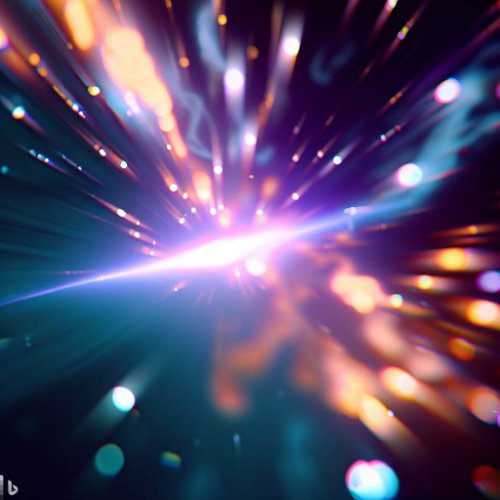Special Effects in 3D Animations
In the world of 3D animations, special effects play a crucial role in creating visually stunning and captivating visual experiences. These effects add depth, realism, and excitement to animations, bringing characters, objects, and environments to life. From realistic simulations to fantastical elements, special effects elevate the quality and impact of 3D animations. In this article, we will explore some of the key special effects used in 3D animations and their significance in creating memorable visual experiences.

Particle Effects
Particle effects are widely used in 3D animations to simulate the behavior of individual particles, such as smoke, fire, dust, or water droplets. These effects add realism and detail to animations, enhancing the overall visual experience.
Some examples of particle effects include:
- Fire and Explosions: Realistic fire and explosion effects can be created using particles, adding intensity and drama to action sequences.
- Weather Effects: Rain, snow, or fog can be simulated using particles, creating atmospheric and immersive environments.
- Magic and Energy: Particle effects can be used to depict magical elements, energy bursts, or other mystical phenomena.
Particle effects in 3D animations are achieved by manipulating parameters such as size, color, density, and behavior of individual particles, resulting in visually striking and dynamic scenes.
Lighting and Shadows
Lighting and shadows are critical components in creating realistic and visually appealing 3D animations. The use of special lighting effects and shadowing techniques enhances the sense of depth, texture, and realism in the animation.
- Global Illumination: Global illumination techniques simulate the interaction of light with surfaces, resulting in realistic lighting and shading effects.
- Ambient Occlusion: Ambient occlusion adds depth and realism by simulating the darkening of areas that are close to surfaces or objects.
- Shadow Mapping: Shadow mapping techniques generate accurate and dynamic shadows, adding depth and dimensionality to the animation.
By carefully manipulating lighting and shadows, 3D animators can create visually immersive and compelling scenes that evoke different moods and atmospheres.
Physics Simulations
Physics simulations are used to mimic real-world physical behaviors and interactions within 3D animations. These simulations contribute to the realism and believability of the animation, making objects and characters move and interact in a natural and convincing manner.
Some common physics simulations used in 3D animations include:
- Rigid Body Dynamics: Rigid body simulations simulate the movement and collisions of solid objects, enabling realistic object interactions and physics-based animations.
- Cloth Simulation: Cloth simulation techniques recreate the behavior of fabrics, allowing realistic movement, draping, and interaction with external forces.
- Fluid Dynamics: Fluid simulations are employed to replicate the movement and behavior of liquids, such as water, lava, or smoke.
Physics simulations enable animators to create dynamic and lifelike animations that respond realistically to external forces, gravity, and other environmental factors.
Motion Capture
Motion capture, also known as mocap, is a technique used to capture the movements of real actors or objects and apply them to 3D animations. This technology allows for the creation of highly realistic and natural character movements.

The process of motion capture involves recording the movements of actors wearing specialized suits or markers and transferring those movements to a digital character. This technique enables animators to accurately capture the subtleties of human motion, resulting in more authentic and believable animations.
Motion capture is commonly used in various industries, including film, video games, and virtual reality, to create realistic character animations and improve the overall quality of the visual experience.
Special Effects for Visual Impact
In addition to enhancing realism, special effects are often used to create visually striking and impactful moments in 3
D animations. These effects aim to captivate the audience and leave a lasting impression.
Some examples of special effects for visual impact include:
- Explosions and Destruction: Spectacular explosions and destruction sequences can be created using a combination of particle effects, physics simulations, and dynamic animations.
- Magical and Fantasy Elements: Special effects can be employed to depict fantastical elements such as spells, transformations, or mythical creatures, adding a sense of wonder and enchantment.
- Slow Motion and Time Manipulation: Manipulating time through slow-motion or time-lapse effects can create dramatic or surreal visual moments, enhancing the storytelling and visual impact.
These special effects contribute to the overall aesthetic appeal and wow-factor of 3D animations, making them visually captivating and memorable.
Conclusion
Special effects are instrumental in creating visually stunning and captivating 3D animations. Particle effects, lighting and shadows, physics simulations, motion capture, and special effects for visual impact all contribute to the realism, excitement, and visual appeal of animations. These effects enhance the overall experience, creating immersive and memorable visual storytelling.
As technology continues to advance, we can expect even more advanced and realistic special effects in 3D animations, pushing the boundaries of what is possible and captivating audiences with breathtaking visual experiences.
Resources:
Frequently Asked Questions (FAQ)
- What are particle effects in 3D animations? Particle effects simulate the behavior of individual particles, such as fire, smoke, or water droplets, adding realism and detail to animations.
- How do special lighting effects contribute to 3D animations? Special lighting effects enhance the sense of depth, texture, and realism by simulating realistic lighting and shadowing.
- What is motion capture, and how is it used in 3D animations? Motion capture is a technique used to capture real-world movements and apply them to digital characters, resulting in realistic and natural character animations.
- What are some special effects used for visual impact in 3D animations? Special effects such as explosions, magical elements, and time manipulation are used to create visually striking and impactful moments in animations.
If you have any further questions, please feel free to contact us for more information.
Blog Author: Marek Eller
Post Date: June 7, 2023
Categories: 3D Animations

